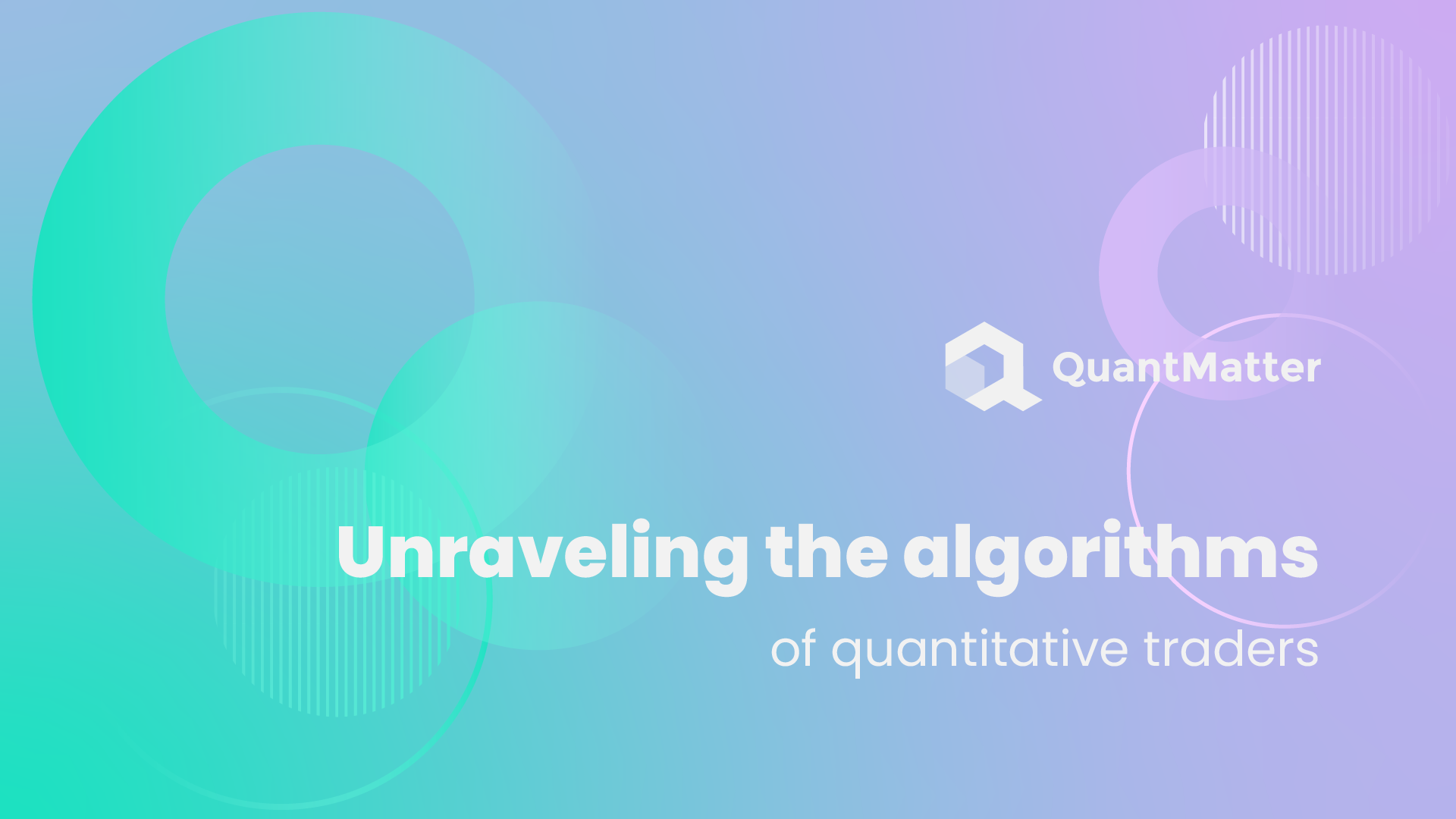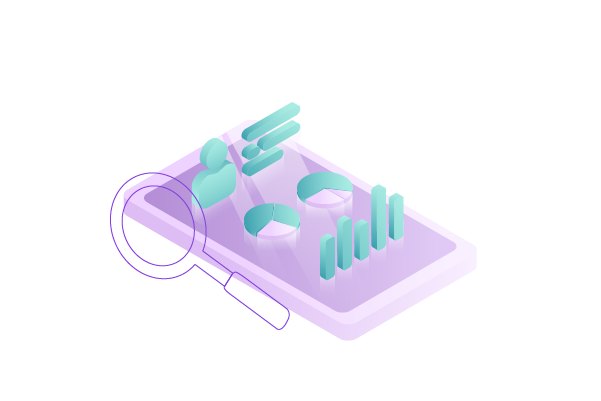
At all times, in the dynamic world of finance, investors and dealers are constantly searching for innovative ways to stay ahead of their competitors. Quantitative trader, also known as quant trade, has become common in the last few years.
Many experts are attracted by this methodology as it uses new approaches, is scientifically sound, and gives good results over time. This article discusses quant trader and highlights their overview, strategies, and how to become one of them.
Quant Trader: An Overview

The quant trader strategy, which people call algorithmic trading, is a well organised and informative model for handling the complicated market’s environment. It differs greatly from traditional trading as it heavily uses quantitative methods and statistical data for decision-making. Data plays a major role in this complex marketing scheme. Various historical as well as current market price volumes in economic indicators like news sentiment are all diligently gathered and processed.
These are the main steps in a quantitative trade. Firstly, data is collected and cleaned up as per its accuracy and suitability for analysis. Mathematical models are used by traders, after which they come up with different strategies for finding the patterns embedded in the data. These strategies are subjected to rigorous backtesting to test the validity of their results and determine possible errors. Capital is also protected by effective risk management strategies.
At this point, the strategy is automated, plugged into trading platforms, and placed in execution mode without further human involvement. The strategy remains up-to-date because there is continuous monitoring and optimization. It is crucial for quantitative trade to be compliant with regulatory requirements because it can shape market behavior. Although this is a systemic and algorithmic approach that minimizes emotions in trading, it needs to be highly skilled and flexible. In sum, quant trader use data, technological abilities, and quantitative skills to take advantage of the financial market, which plays an important role in modern finance.
Quant trader relies on a huge amount of data and the growth that exists within contemporary finance. Advances in technology and big data allow quantitative traders to keep updating the model, seek out new trading opportunities, and react to any alterations happening in the market immediately. Such a dynamic approach also helps create advanced strategies that can withstand intricate and fast-paced markets. Furthermore, quant trader have not only redefined the way institutional traders interact with financial markets but is also gaining popularity among individual investors through algorithmic platform trading as well as robo advisors, so that it is no longer limited to institutional traders but rather available to a multitude of market participants. This evolution proves that quant trader will always be relevant in the modern financial world.
The Role of Quant Trader

A quantitative trader, often referred to as a quant, plays a crucial role in the complex environment of financial markets. Quantitative traders lead in formulating and implementing algorithmic trading strategies that use mathematical models and quantitative analysis to attain an upper hand advantage. The scope of their duties ranges from detailed data analysis and research to the critical function of managing risks. Programming proficiency forms an integral part of a quant-trader’s toolkit as they program code their algorithms, interact with trade platforms, and keep abreast of technology developments in the financial industry.
Constant real-time market monitoring is an intrinsic part of the daily schedule of a quant trader. They are continuously alert for any possible developments that may impact their decision making algorithms, including changes in prices, news, or other dynamics in the markets. Quant traders also often rely on collaboration, working together within teams consisting of different people like software developers, data scientists, and risk managers. The adaptability of quant traders has to be very high because financial markets are constantly changing, and they require continuous educational development to keep abreast of changes in terms and quantification methods.
Prior to employing algorithms in actual markets, quants perform thorough testing and model validation to determine whether their strategy is valid in a real-world setting. Furthermore, they are required to comply with financial rules and standards, comply with legal issues for trade operations, and adhere to industry norms and rules. Essentially, a quant trader’s function comprises special skills as well as finance knowledge, mathematics experience, programming talent, and continued education in an ever-changing environment.
Additionally, a quant trader’s responsibility does not just involve the calculation and algorithmic trading areas. Instead, they are actively involved in financial discourse on the ethics and best practices of the financial system as a whole. However, as quant traders, they have to deal with questions of fairness, transparency, and the possible bias of their models. quant trader is very tricky when it comes to ethics because of the perfect combination between creative innovation and responsible behavior. Quant traders also join other participants in the discourse on ethics around algorithmic trading, with a view to safeguarding the healthiness of their respective jurisdictions’ financial systems.
Quant Trader Strategies

Various types of quant trader strategies exist in the financial markets, all of which are specific to different aims and economic settings. These strategies are now tailored for the highly complex financial market, given the availability of sophisticated technological tools today. Let’s delve into some of the key quant trader strategies that have gained prominence in recent years, shedding light on their unique characteristics:
1. High-Frequency Trading (HFT)
The most advanced quant trader strategy is high-frequency trading, which involves supreme speed and accuracy. The HFT algorithms have a large capacity to process numerous orders within fractions of a second, thereby exploiting brief market inefficiencies. For their part, these types of strategies are using very potent computational resources and small time-to-exchanges so that their decisions can be made and executed in a moment.
HFT is one of such methods, which comprises different strategies like market making in conjunction with statistical arbitrage and involves algorithmic traders who typically aim at generating insignificant revenue within a small trade while having a large total number of operations.
2. Market-Making
One of the strategies of a quant trader involves acting as a liquidity provider, i.e., market-making. They provide liquidity, and at the same time, they try to earn money because of the bid – ask spread.
They are prepared to purchase from suppliers and resell to buyers to make markets operate. However, such positions call for risk management of high standards because it is possible for a market maker to hold both long and short positions at any point in order to hold a neutral stance on the market.
Also Read: Market Making: Strategies and Techniques
3. Statistical Arbitrage
Statistical arbitrage employs opportunities provided by pricing errors in the markets. Such algorithms identify the assets that are statistically less priced versus their related counterparts or past average values.
This strategy aims to benefit from such discrepancies if they exist through a process of going long on underrated holdings and short on overrated ones. Identifying and analyzing the above-mentioned mispricing would require sophisticated statistical and mathematical modeling methods.
4. Trend Following
Trend following is a strategy that is adopted by trend followers in order to catch the trends and make gains out of them. This involves the detection of and chasing of price trends, either upwards (bullish) or downwards (bearish). In this regard, when a trend is identified, the strategy will go long (buy) in an uptrend for a short-term profit, and it will sell short (sell for a short-term loss) during a downtrend.
However, it is crucial to point out that, for a quant trader plan to have success, strict testing, risk management, and continual surveillance are necessary. Furthermore, in order for these approaches to succeed, their implementation requires access to historical and live data, complex modeling methods, and modern tech architecture.
How Do I Become a Quant Trader?
Obtaining the knowledge and skills needed to become a “quant”, or quantitative trader, requires training, acquiring the skills needed for work in this field, and practice. These quantitative traders rely on mathematical and statistical models to make trade decisions in the financial marketplace. Here are the steps to becoming a quant trader:
– Educational Background
Quantitative traders would need a stronger educational base of knowledge. A rigorous grounding in analytical thinking would also be acquired by getting a bachelor’s degree in quantitative disciplines like mathematics, statistics, finance, engineering, and computer science. Nevertheless, most quant traders go further and gain an advanced degree, like a master’s or doctorate, in order to dig deeper into the subject.
They can offer these degrees in fields such as financial engineering, quantitative finance, and computational mathematics. These sophisticated educational programs provide people with the expertise necessary for creating intricate trading algorithms and models. However, one should keep in mind that most of the quantum trading firms hunt for masters and PHD holders; hence, such an investment in education may help secure more employment opportunities.
– Programming
Without programming, quant trader are dead. To this end, you’ll have to acquire proficiency in languages such as Python, R, C++, or Java. These are the languages that enable traders to execute their strategies besides conducting data analyses. Libraries and frameworks exclusive to quantitative finance, including Pandas, NumPy, and QuantLib, also need you here.
Programming expertise allows you to effectively deal with huge data sets, build up statistical approaches, and test trading strategies retrospectively. Coding is not the only issue here; it’s being able to convert your mathematical and statistical knowledge into actual trading instruments. It should be noted that a quant trader has to continuously learn new methods while updating on new systems released by software developers due to the highly competitive nature characterizing the current scenario.
– Financial Markets
Therefore, traders who are quantitative must comprehend the intricacies of the financial system in depth. This is about comprehension of different assets such as stock, bonds, options, and futures, among others. However, you will also have to understand the complexities of microstructure in a market, order flow, and liquidity, among others.
Additionally, it is required to analyze the role played by economic events, central bank policies, and international geopolitics in the financial market. It is difficult to develop trading strategies without sufficient background on price valuation processes and risk analysis, among other things.
Also Read: What Is a Quant? Everything about Quantitative Analyst
– Practical Experience
That’s how you use theory in practice. The experience obtained via internship is invaluable and can be complemented by various entry-level positions available at financial bodies for carrying out quantitative research or algorithm development.
You are able to get a sense of what the process in a trading system looks like, how to take care of the risk management sector, and how to fine tuning of your trading techniques. This is a chance to take after veteran experts while incorporating that capacity into the special requirements of the financial sector.
– Risk Management
Quant trader requires risk management as a key feature. However, traders can adopt strategies to deal with the risk because there is often a lot of money involved in the trade. Risk management strategies such as instituting stop-loss orders, broad portfolio diversification, or cautious use of leverage can be used to mitigate these risks.
They also use Monte Carlo simulations and VaR to compute the potential losses under various market conditions. Capital preservation and sustainability require employing risk management strategies for a quant trading career.
– Networking
Being a networker is not just an incidental aspect of becoming a quantitative trader but rather a strategic necessity. In such a specialized and competitive sphere of activity, forming contacts with like-minded people is a step to achieving career success.
Networking opens up an infinite resource of possibilities for you. You need to know where to look for jobs, talk with experienced traders, and find mentors as well. The quant trader world is always moving; it highly values innovation, and therefore, it requires a network that will provide the necessary assistance, which is an invaluable asset.
Conclusion
The role of quant trader in financial settings can no longer be ignored. Data analysis, algorithms, and multiple approaches for pursuing profits in a dynamic environment With the advancement of technology, quant trader will develop more prospects as well as challenges for traders and investors.
In summary, this paper gave a detailed discussion about quant trader, how it involves algorithms, several tactics used in it, and the role of computers in changing how capital is allocated.
If you desire a career in trade or just want to understand how modern finance works, then knowing the process surrounding quant trader is important, as it is one way through which traders carry out their operations.
Disclaimer: The information provided by Quant Matter in this article is intended for general informational purposes and does not reflect the company’s opinion. It is not intended as investment advice or a recommendation. Readers are strongly advised to conduct their own thorough research and consult with a qualified financial advisor before making any financial decisions.

I craft stories that make complex ideas clear. I simplify the blend of data science, machine learning, and crypto trading, showcasing how advanced tech and quantitative models analyze data for informed trading choices. Join me in exploring the realm of quantitative trading, where my narratives make intricate concepts easy to grasp.
- Alifia Berizkyhttps://quantmatter.com/author/alifia-berizky/
- Alifia Berizkyhttps://quantmatter.com/author/alifia-berizky/
- Alifia Berizkyhttps://quantmatter.com/author/alifia-berizky/
- Alifia Berizkyhttps://quantmatter.com/author/alifia-berizky/
